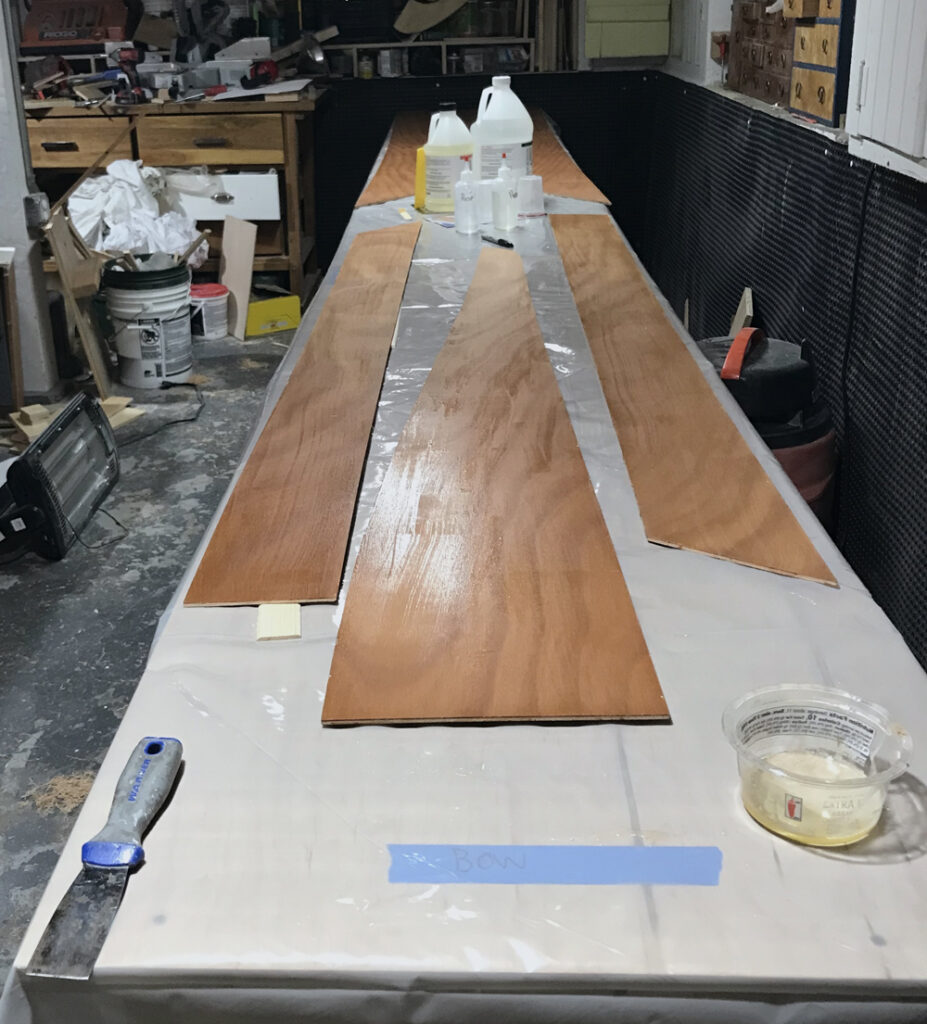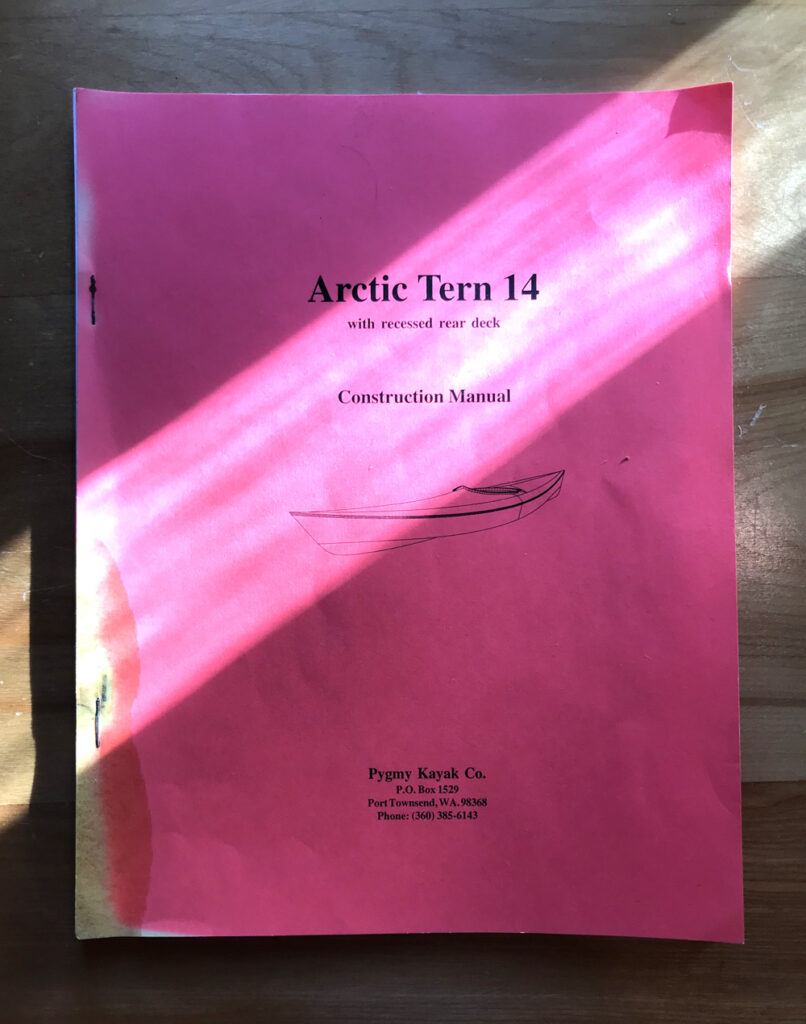
The first step in building a stitch and glue kit is to join shorter lengths of plywood into longer planks using fiberglass tape and epoxy. I began by pre-saturating the plywood with epoxy. There’s an ongoing online debate on whether pre-saturation is worth it, but I took the cautious approach in the hope of avoiding dry spots when fiberglassing the hull. Following Ted Moores’ Kayaks You Can Build, I only applied the tape to the insides of the planks. Omitting the tape on the outside eliminates the risk of a subtle bulge at the joint. Moving the planks around required a little extra caution, but reduction in effort and improved appearance is worth it.

